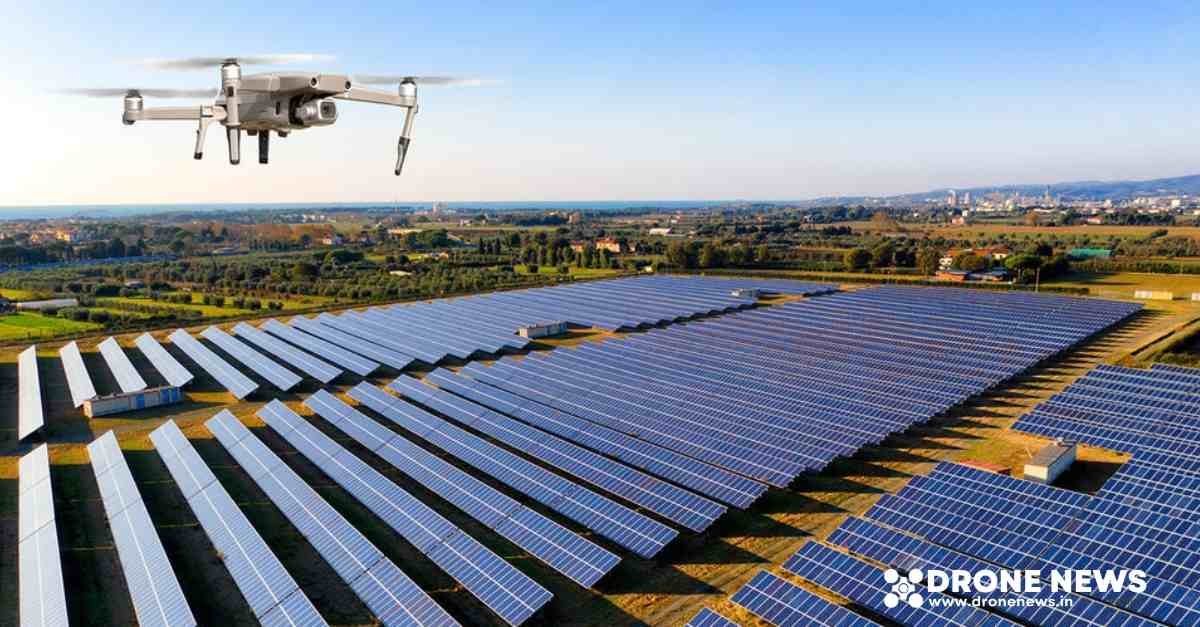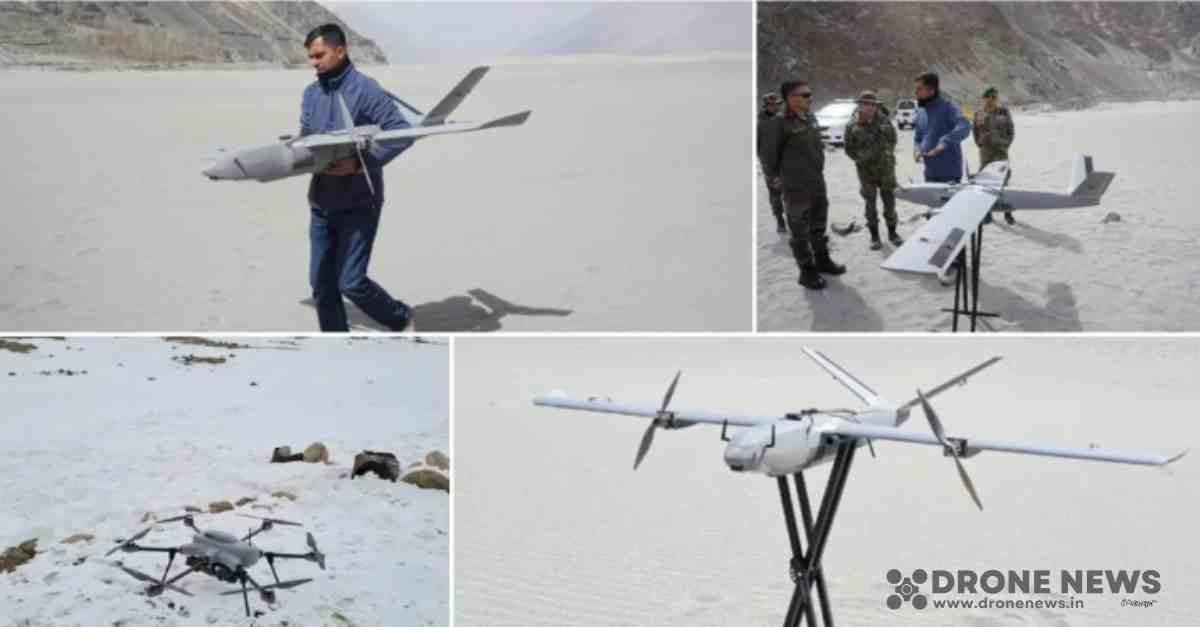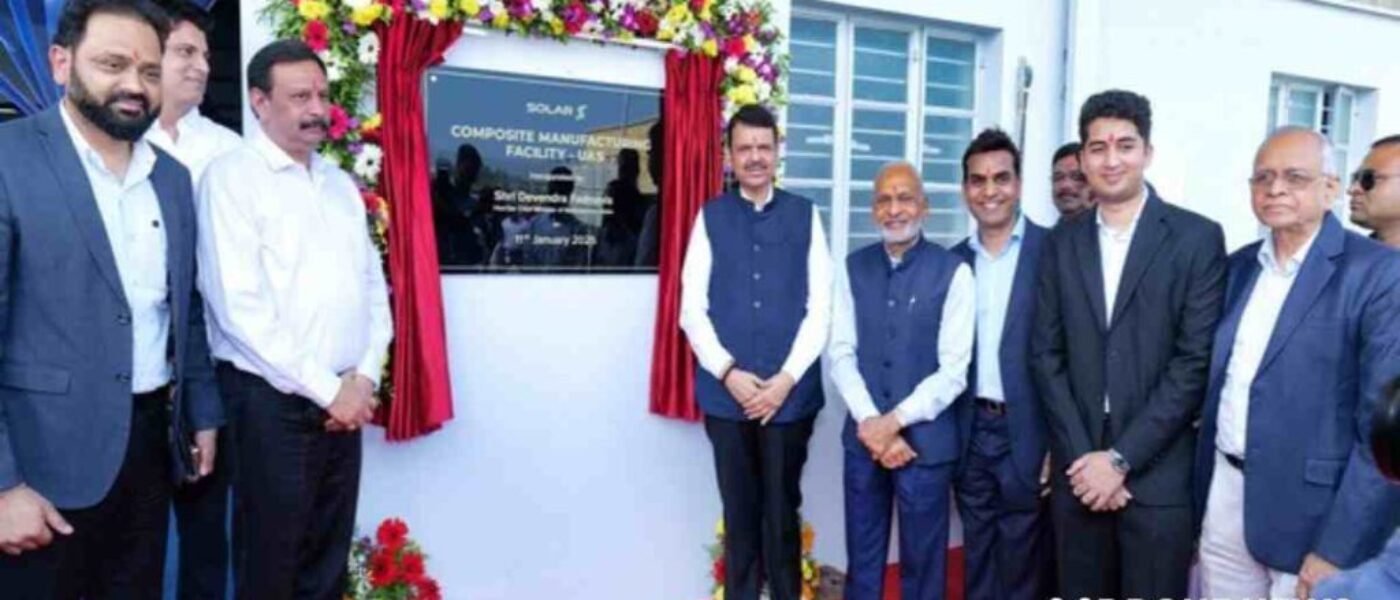Introduction to the Inauguration
On a bright Saturday in Nagpur, Maharashtra Chief Minister Devendra Fadnavis unveiled an exciting development in technology and defence – the inauguration of Solar Industries’ cutting-edge drone-making facility. This new establishment, located at Economics Explosives Ltd (EEL), marks a significant step forward in India’s push for indigenous drone and defence systems manufacturing. The facility is set to become a central hub for producing unmanned aerial vehicles (UAVs) with capabilities that extend to both civilian and military applications. Solar Industries is leading the charge by advancing drone weaponisation, developing loitering munitions and state-of-the-art anti-drone systems. With a 1.25 km runway for testing and an ambitious production goal, the future of drone technology in India looks promising from this innovative base in Nagpur.

Purpose of the Drone-Making Facility
The primary aim of this facility is to bolster India’s self-reliance in the domain of drone technology, particularly focusing on the country’s defence sector. This establishment not only supports the design and production of regular drones but also includes the development of advanced weaponized drones and loitering munitions. By nurturing such high-tech production within the country, the facility seeks to dramatically reduce dependence on foreign sources for combat drones and counter-drone systems.
Moreover, the facility is poised to produce other critical systems like drone-based mine detection and disposal mechanisms. With an eye towards both domestic and international demands, this site endeavours to position itself as a leading hub for advanced drone technology innovation and manufacturing.
Technologies Developed at the Facility
The Nagpur facility is not your ordinary run-of-the-mill manufacturing unit; it is equipped to spearhead a variety of advanced drone technologies. At the forefront is the development of Medium Altitude Long Endurance (MALE) class UAVs, which are capable of both surveillance and attack missions. This aligns with the global shift towards multi-functional UAVs that can handle a diverse array of tasks in various operational scenarios.
Another key technological achievement is the Nagastra-1, an indigenous loitering munition that offers precision striking abilities with GPS navigation, featuring a safety mechanism to ensure retrieval if not deployed during a mission. The design and development processes at the facility are also laying the groundwork for future generations of such munitions, including the Nagastra-2 and Nagastra-3. This constant progression ensures that the facility remains at the cutting edge of drone and UAV technology.
Impact on India’s Defence Strategy
As the role of drones becomes more integrated into military operations worldwide, their strategic importance cannot be overstated. This facility stands as a linchpin in India’s broader defence strategy, providing the technological edge required to protect national interests.
Advances in Drone and UAV Capabilities
Drones have redefined conventional and unconventional warfare strategies around the globe, providing vital surveillance, reconnaissance, and combat support. The Nagpur facility empowers India to develop highly sophisticated UAVs with enhanced performance capabilities such as increased flight endurance, precise target acquisition, and the ability to carry substantial payloads.
These advancements also include counter-drone solutions, which are crucial given the rising incidents of unauthorized drone incursions along India’s borders. Developing technologies to accurately detect and mitigate these threats is a significant step forward in national defence.
Development of Indigenous Loiter Munitions
The creation of indigenous loiter munitions, like the Nagastra-1, exemplifies India’s move towards self-reliance in defence technology. This loitering munition is adept at ensuring the precision striking of enemy targets and exhibits versatility with its retrieval functions, setting a benchmark for locally developed military technology.
These munitions serve as a reliable alternative to foreign technology, which is often not fully aligned with India’s specific defence requirements. By nurturing local expertise and production, India aims to craft munitions that precisely cater to its unique strategic needs, thus enhancing operational efficiency.
Strategic Importance of Weaponized Drones
Weaponized drones are not just a tactical advantage; they are also a strategic asset that can redefine military engagements. With the capacity to deploy these drones at a moment’s notice, India can respond to threats with remarkable speed and accuracy.
The facility’s focus on weaponization includes exploring new concepts such as drone swarming and coordinated attacks, where multiple drones operate in unison to achieve strategic objectives. Such capabilities ensure that the Indian armed forces have the technological upper hand in modern warfare theatres, shifting the balance of power in their favour.
In conclusion, the inauguration of Solar Industries’ drone-making facility in Nagpur is a remarkable leap forward in India’s defence landscape. By fostering advancements in locally developed UAV and drone technologies, this facility not only enhances military capabilities but also strengthens India’s position as a formidable player in global drone manufacturing. With future developments anticipated to expand the technological arsenal, India is well on its way to solidifying autonomous prowess in the crucial sector of aerial defence.
Future Prospects and Investments

The inauguration of Solar Industries’ state-of-the-art drone-making facility in Nagpur marks a significant step forward in the realms of technology and defence for India. This move is not just about expanding manufacturing capabilities but is pivotal for the future landscape of India’s defence sector. As we delve into the future prospects and aligned investments, there are several promising avenues that beckon exploration.
Expansive Investment Vision
Solar Industries has committed to investing an impressive INR 10,000 crore over the next decade. This financial commitment aims to enhance defence capabilities, focusing on the manufacturing and development of drones, including UAVs and Loitering Munitions. Such a substantial investment is indicative of a long-term strategy to not only foster technological advancement but also to strengthen India’s self-reliance in defence manufacturing.
Enhanced Defence Capabilities
The facility has already achieved a milestone by developing the first indigenous Loiter Munition, known as ‘Nagastra-1,’ which has been inducted into the Indian Army. Not only is it a testament to the technological prowess embedded within Solar Industries, but it also underscores the opportunity for further advancements. The ongoing development of Nagastra-2 and Nagastra-3 aims to boost the performance and warhead capacity of these systems, signalling a robust pipeline of innovations.
Nagpur as a Technological Hub
Satyanarayan Nuwal’s vision to transform Nagpur into a hub for weaponized drones and supporting technologies is supported by the new facility’s capabilities. With an annual production capability of up to 1,000 Loiter Munitions and plans for a dedicated runway to test UAVs, Nagpur is set to become a focal point for drone technology. This strategic positioning enhances not only local industry prospects but also contributes significantly to the national technological arsenal.
Broader Implications and Opportunities
– Job Creation: The establishment of such sophisticated facilities usually heralds a boost in employment opportunities. Skilled positions in engineering, manufacturing, and research and development are likely to emerge, providing significant economic benefits to the region.
– Technological Advancements: The focus on indigenous development places India on the map for advanced drone technology. By leading in developing cutting-edge UAVs with dual capabilities for surveillance and combat, India can gradually transition into an exporter of drone technology, thus catalysing economic benefits.
– Strategic Independence: As India continues to bolster its defence infrastructure, the capacity to produce sophisticated drone systems domestically reduces dependency on foreign imports. This fosters strategic independence while allowing customized solutions tailored to Indian defence needs.
In conclusion, the future prospects brought forth by this development are vast and multifaceted. With strategic investments and a clear vision, India’s dream of becoming self-reliant in drone technology manufacturing is on a promising trajectory. The intertwining of technology and defence not only secures India’s borders but also propels the country’s standing on a global stage as a defense manufacturing powerhouse.
Conclusion
The inauguration of Solar Industries’ drone-making facility in Nagpur marks a remarkable leap forward for India’s drone technology landscape. With cutting-edge innovations and a commitment to enhancing defence capabilities, this facility is poised to bolster India’s position in both civil and military applications of drones. Solar Industries’ strides towards self-reliance, highlighted by projects like the Nagastra series, underline the potential for Nagpur to become a global hub for drone technology. This development is not just a win for Maharashtra but a significant milestone for India’s technological future.
